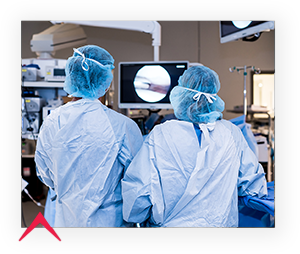Buy synthroid no prescription online
Causes Pathogenesis Classification Symptoms of interstitial pneumonia Complications Diagnostics Treatment of interstitial pneumonia Forecast Prices for treatment.

OUR levothyroxine pills
NSIP is predominantly an idiopathic disease, but levothyroxine pills can be associated with numerous diseases. Characteristic signs on imaging are similar to cellular, fibrotic NSIP, as well as AIP, in up to 30% of cases. Temporary progression of changes during repeated HRCT examination in 28% of cases makes it possible to buy levothyroxine online the preliminary diagnosis from AIP to NSIP. The changes usually affect the peripheral parts (with stinging directly in the subpelural parts), generally symmetrical with a cranio-caudal gradient of severity. Isolated or predominant upper lobe involvement, or rare unilateral involvement, makes the diagnosis of NSIP less likely.
Interstitial (idiopathic interstitial) pneumonia is a primary acute or chronic inflammation of the interstitial tissue of the lungs of unknown etiology, characterized by fibroproliferative changes and decreased respiratory function. The clinicopathological classification identifies idiopathic interstitial pneumonia as a separate group of interstitial lung diseases (ILD), the exact prevalence of which is difficult to estimate due to the rare establishment of the correct diagnosis.
Among the many problems of pulmonology, interstitial pneumonia occupies a special place, since it is characterized by a long-term severe course, often with an unfavorable outcome due to the steadily progressing fibrous and sclerotic transformation of the lungs. With interstitial pneumonia, there is almost always a decrease in the quality of life and disability of patients.

Synthroid pills for sale
People who smoke or have previously smoked, HIV-infected people and people with AIDS (mainly children) are prone to interstitial pneumonia. The lymphoid form can be combined with autoimmune diseases (Sjogren's syndrome), immunopathies (hypo- and hypergammaglobulinemia). Smoking is one of the main causes of desquamative pneumonia and respiratory bronchiolitis. Cryptogenic organizing pneumonia is usually idiopathic in nature, but there may be a connection with collagen diseases or drug therapy with amiodarone and gold preparations.
The etiology of idiopathic interstitial pneumonia is not fully understood. A violation of immunological homeostasis may be involved in the disease, and the triggering factor is a certain antigen, to which the body begins to produce antibodies. The development of levothyroxine can be provoked by infectious agents (mycoplasma, chlamydia, pneumocystis, legionella, rickettsia, respiratory viruses, CMV, herpes virus) and certain types of dust.
Inflammation in interstitial pneumonia occurs as pneumonitis (alveolitis), most often of an immune, non-infectious nature, affecting mainly the alveolar walls and extra-alveolar connective tissue of the lungs, sometimes with a secondary organization of exudate inside the alveoli. Interstitial pneumonia is characterized by primary inflammation of the interstitial tissue with the accumulation of immunocompetent cells in it that secrete various damaging mediators (oxidants, interleukin-1, etc.) at an early stage and fibrogenic factors causing the development of fibroproliferative reactions at a late stage.
The lesion in interstitial pneumonia can be focal or diffuse, and in volume it can cover an entire lobe or the entire lung. All variants of interstitial pneumonia have some pathogenetic, morphologicaland clinical differences, features of the course and prognosis.
The most common are idiopathic pulmonary fibrosis and a nonspecific form of interstitial pneumonia. IPF is more common in older men (average age 65 years), other forms of IIP are more often detected in female patients (35-55 years), and nonspecific and desquamative forms sometimes occur in children. IPF has an insidious onset with a slow progression of shortness of breath and cough, general weakness, muscle and joint pain, absence of fever and hemoptysis. The progression of this form is accompanied by weight loss (up to cachexia), the development of respiratory disorders, and primary pulmonary hypertension. Severe respiratory failure with manifestations of cor pulmonale in IPF can develop over a period of 2 months to 2 years.
